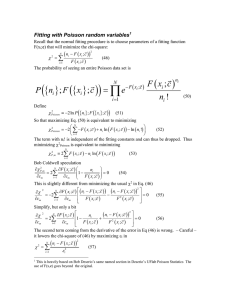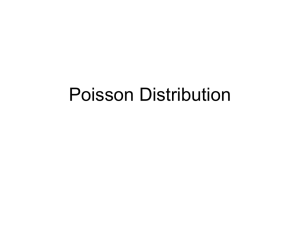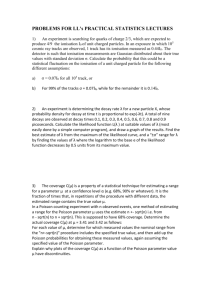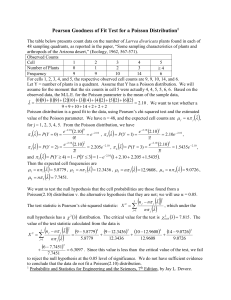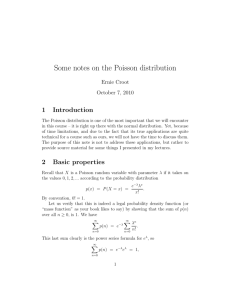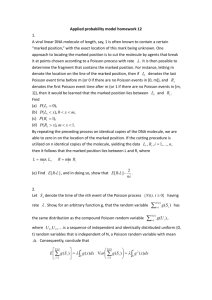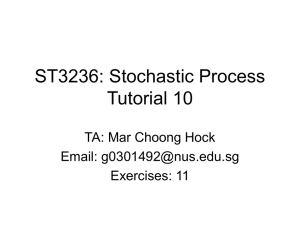Note on AS91586 and Poisson assumptions
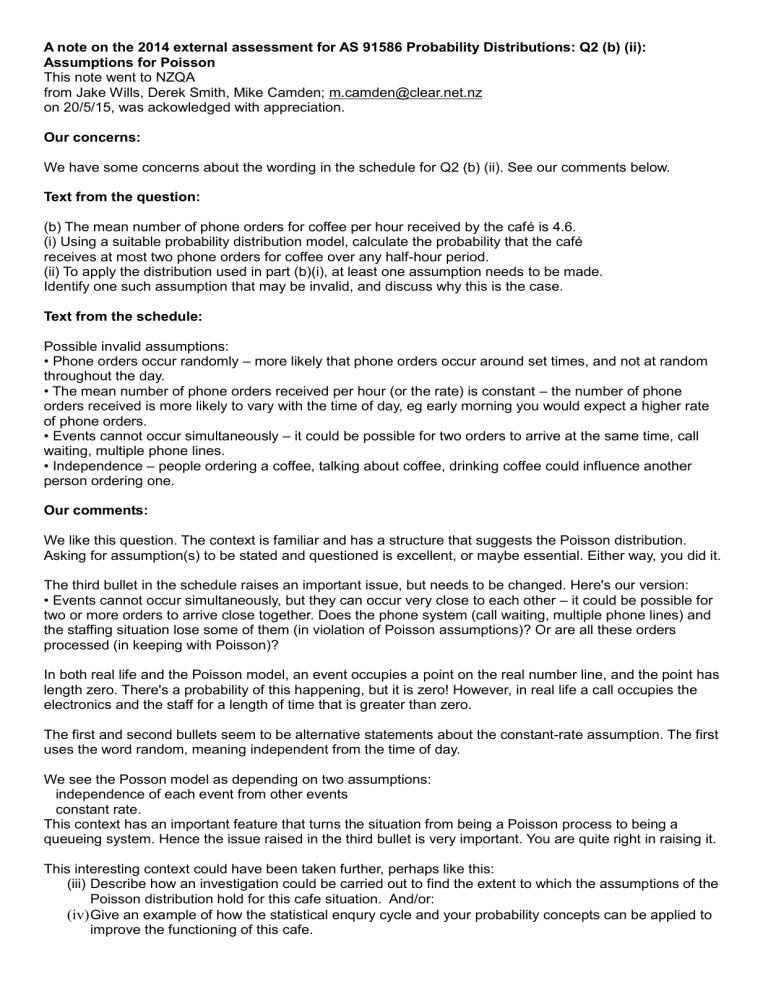
A note on the 2014 external assessment for AS 91586 Probability Distributions: Q2 (b) (ii):
Assumptions for Poisson
This note went to NZQA from Jake Wills, Derek Smith, Mike Camden; m.camden@clear.net.nz on 20/5/15, was ackowledged with appreciation.
Our concerns:
We have some concerns about the wording in the schedule for Q2 (b) (ii). See our comments below.
Text from the question:
(b) The mean number of phone orders for coffee per hour received by the caf é is 4.6.
(i) Using a suitable probability distribution model, calculate the probability that the café receives at most two phone orders for coffee over any half-hour period.
(ii) To apply the distribution used in part (b)(i), at least one assumption needs to be made.
Identify one such assumption that may be invalid, and discuss why this is the case.
Text from the schedule:
Possible invalid assumptions:
• Phone orders occur randomly – more likely that phone orders occur around set times, and not at random throughout the day.
• The mean number of phone orders received per hour (or the rate) is constant – the number of phone orders received is more likely to vary with the time of day, eg early morning you would expect a higher rate of phone orders.
• Events cannot occur simultaneously – it could be possible for two orders to arrive at the same time, call waiting, multiple phone lines.
• Independence – people ordering a coffee, talking about coffee, drinking coffee could influence another person ordering one.
Our comments:
We like this question. The context is familiar and has a structure that suggests the Poisson distribution.
Asking for assumption(s) to be stated and questioned is excellent, or maybe essential. Either way, you did it.
The third bullet in the schedule raises an important issue, but needs to be changed. Here's our version:
• Events cannot occur simultaneously, but they can occur very close to each other – it could be possible for two or more orders to arrive close together. Does the phone system (call waiting, multiple phone lines) and the staffing situation lose some of them (in violation of Poisson assumptions)? Or are all these orders processed (in keeping with Poisson)?
In both real life and the Poisson model, an event occupies a point on the real number line, and the point has length zero. There's a probability of this happening, but it is zero! However, in real life a call occupies the electronics and the staff for a length of time that is greater than zero.
The first and second bullets seem to be alternative statements about the constant-rate assumption. The first uses the word random, meaning independent from the time of day.
We see the Posson model as depending on two assumptions:
independence of each event from other events
constant rate.
This context has an important feature that turns the situation from being a Poisson process to being a queueing system. Hence the issue raised in the third bullet is very important. You are quite right in raising it.
This interesting context could have been taken further, perhaps like this:
(iii) Describe how an investigation could be carried out to find the extent to which the assumptions of the
Poisson distribution hold for this cafe situation. And/or:
(iv) Give an example of how the statistical enqury cycle and your probability concepts can be applied to improve the functioning of this cafe.



